Emergency evacuations
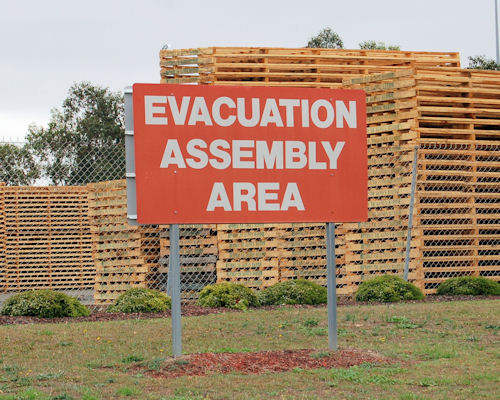 Audio for slide 1 (mp3 |6|KB)
Audio for slide 1 (mp3 |6|KB)
The evacuation procedure and site map are often posted up in various places around the worksite.
But if you're at a domestic building site or in a client's home, there probably won't be a formal procedure for carrying out an evacuation.
In these cases, all people on-site should assemble in an open area clear of the building so that everyone can be easily accounted for.

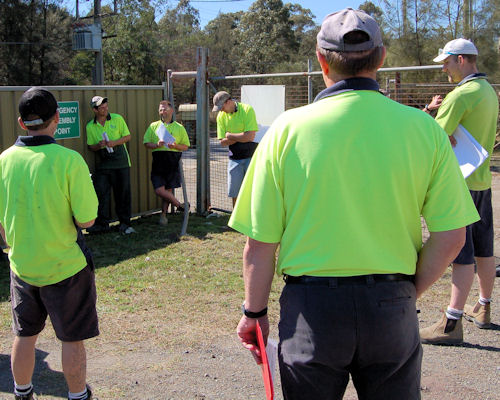 Audio for slide 2 (mp3 |6|KB)
Audio for slide 2 (mp3 |6|KB)
General emergency evacuation procedure
Where there is a site procedure for emergency evacuations, it's normal practice for everyone who comes on-site to be 'inducted' when they arrive for the first time.
At the induction session you're given information about the site's safety policies and procedures, including what to do in the event of an emergency.
The procedure shown below is a general guide on how to respond to an emergency if there is no formal procedure in place.

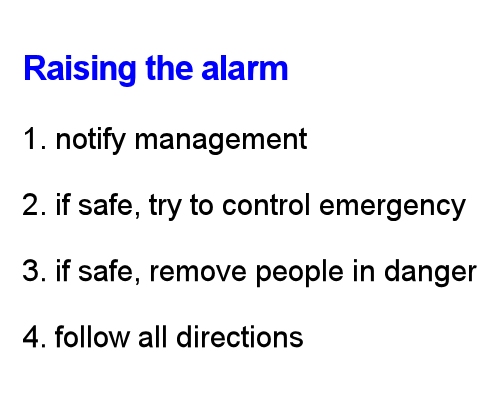 Audio for slide 3 (mp3 |6|KB)
Audio for slide 3 (mp3 |6|KB)
Raising the alarm
If you're the first person to know about the emergency:
- Notify your supervisor or the person in charge immediately, or send another person to tell them.
- If it is safe to do so, try to control the emergency by isolating the power supply, or using the appropriate equipment.
- If safe, remove any people in immediate danger of further injury from the area.
- Follow all directions regarding evacuation of the area from your supervisor or the person in charge.

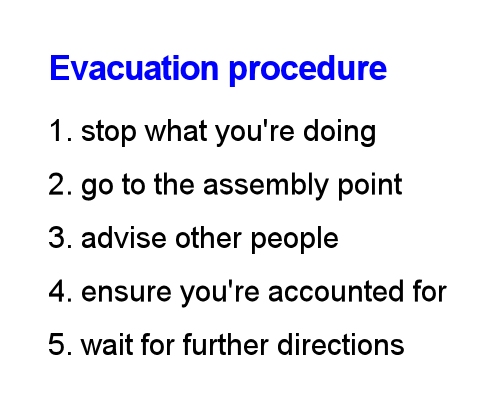 Audio for slide 4 (mp3 |6|KB)
Audio for slide 4 (mp3 |6|KB)
Evacuation procedure
If you are told to evacuate, or if you hear the emergency evacuation alarm:
- Stop what you are doing and switch off the power in your immediate work area, if possible.
- Take the safest route to the Emergency Assembly Point, or the front gate of the site.
- Advise other people along the way to evacuate.
- Ensure that you have been accounted for by your supervisor or the person in charge.
- Wait at the assembly point until directed otherwise by the person in charge. Do not go in search of other people unless given explicit instructions from an authorised person.

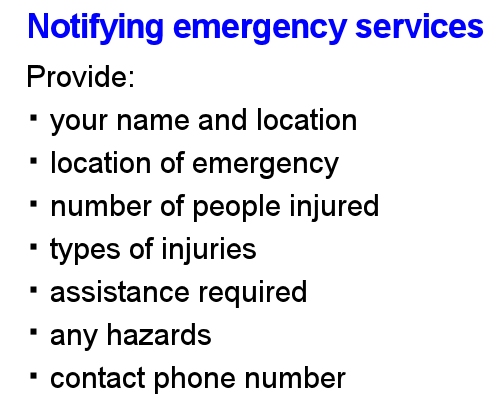 Audio for slide 5 (mp3 |6|KB)
Audio for slide 5 (mp3 |6|KB)
Notifying emergency services
If it is your place to call the emergencies services for help, you should dial '000', remain calm, and provide the following information:
- your name
- your location
- location of the emergency
- number of people injured
- types of injuries sustained
- assistance required; such as ambulance or fire brigade
- any hazards that might exist; such as toxic fumes or spilt chemicals
- contact phone number.

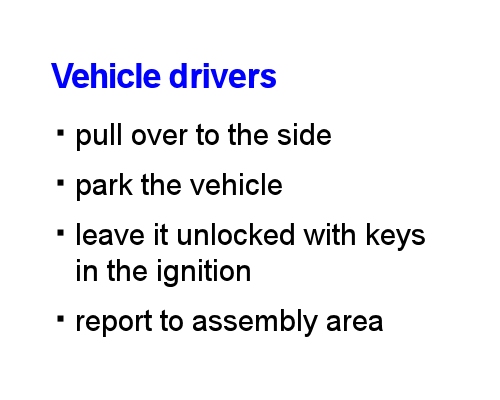 Audio for slide 6 (mp3 |6|KB)
Audio for slide 6 (mp3 |6|KB)
Vehicle drivers
If you are driving a vehicle on-site when the emergency alarm sounds, you should:
- pull over to the side of the road or access way
- park the vehicle, making sure it is well clear of any thoroughfare that may be needed for emergency vehicles
- leave the vehicle unlocked, with the keys in the ignition
- report to the Assembly Area.


Learning activity
Audio 7 (mp3 |6|KB)What arrangements do you have in place for emergency evacuations?
Is there an established procedure for carrying out an emergency evacuation? (If you work at clients' sites, answer this question in relation to the last jobsite you were at.)
Where would you assemble if you had to evacuate? (If you work on-site, describe the area you would have gone to at the last site you were at.)





